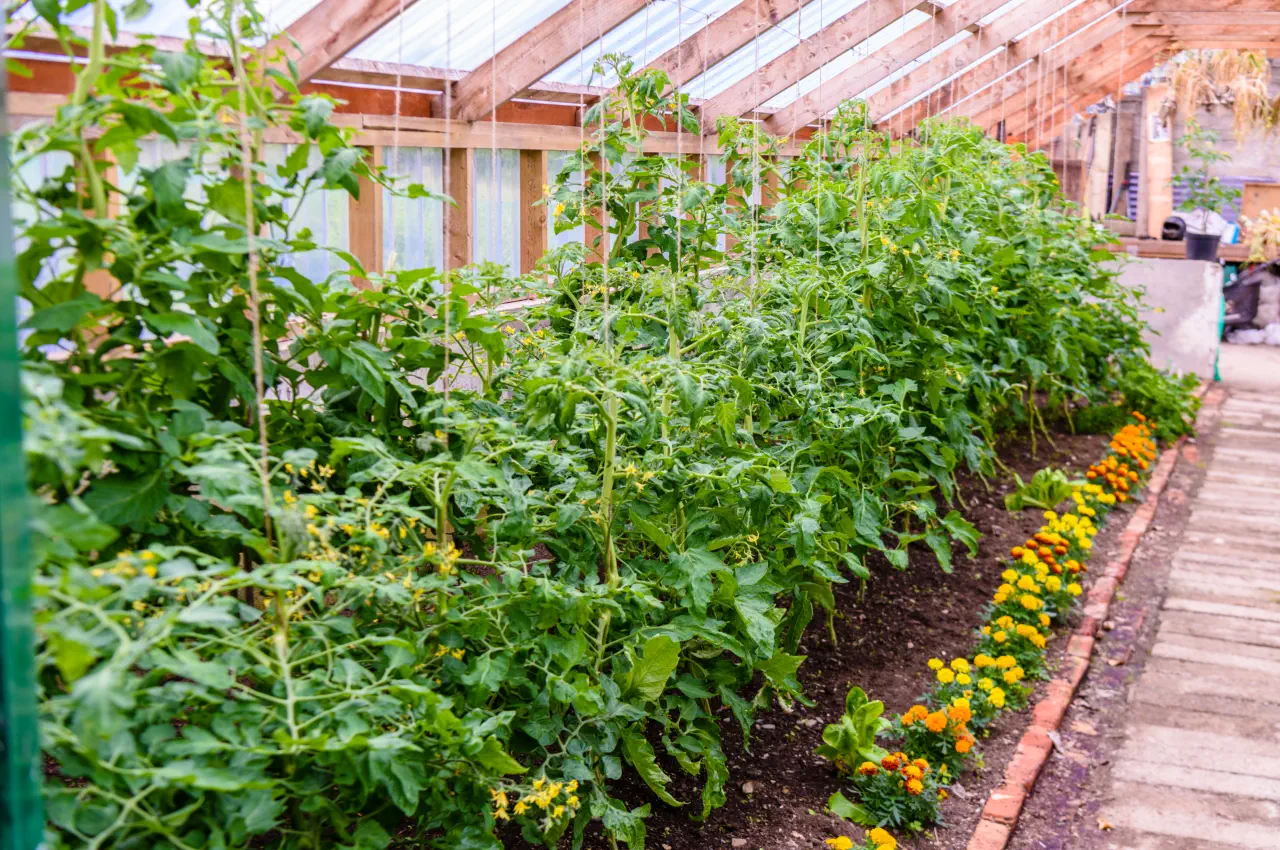Pak Choi is grown for its tasty leaves which are superb when added to stir fries and salads.
The taste is similar to that of mild cabbage and spinach and is a popular addition to many oriental dishes.

Tomatoes are one of the most popular plants to grow in the UK during the summer months. One reason being there is always a big demand at this time of year because we tend to associate summer with salads, and no salad is complete without tomatoes. Another reason is because they are quite easy to grow and who can resist a ripe, sweet, juicy tomato? Tomatoes can be successfully grown in pots in the greenhouse, outdoors in the veg patch, in containers on the patio and even in hanging baskets.
Growing and picking tomatoes is fun and it offers the grower a sense of personal achievement, especially if you grow them from seed to harvest. However, like any other home-grown vegetable or fruit growing exercise, there will almost always be some pest that tries to spoil the show and steal the limelight. In the case of tomatoes, it’s generally whitefly, especially in the greenhouse and to a lesser extent out in the open. Other nuisance pests include thrips and aphids, especially greenfly, which can be very problematic during the warm summer months.
When pests strike you can always resort to insecticides but this is not recommended for any type of edible crops. Neem oil can be effective but it’s much better to plan ahead and try to discourage pests before they get a hold. The best solution is “companion planting”. This refers to planting other types of plants close by to help deter specific pests from attacking your most valuable plants. In the case of tomatoes, marigolds, especially French marigolds, have a lot to offer. The strong pungent smell of French marigolds will send most flying tomato pests packing.
Due to the powerful aroma given off by all types of marigolds, whitefly, thrips and aphids would rather not be in the same vicinity. Marigolds also offer other benefits to tomato plants. Their bright cheerful colours will attract an array of pollinators, which will also visit the flowering tomato plants, and there’s more. Flowering plants like marigolds will also attract predators such as ladybirds and lacewing, which will feast on any nearby aphids. Outdoor grown tomatoes will benefit from some protection against parasitic root-knot nematodes, which will be drawn towards the marigolds and away from the tomatoes.
To help protect greenhouse-grown tomatoes, grow marigolds in pots and position them within 45cm - 60cm away from your tomato plants. For outdoor grown tomatoes, plant small groups of marigolds within 45cm of your tomato plants, feeding and watering them at the same time. If you are also growing vegetables or beans nearby then marigolds can help protect these too. However, one thing to look out for is slugs. Slugs will devour French marigolds. They are not the slug’s favourite dish but when the conditions are right they will completely defoliate the plants in a single night. Calendulas (Old English Marigold) on the other hand, are generally not affected by slug damage.
Do you have any tomato growing tips? Leave a comment below and let everyone know....
All blog content on this page is copyright of SimplySeed and is not to be reproduced without prior written permission. ©